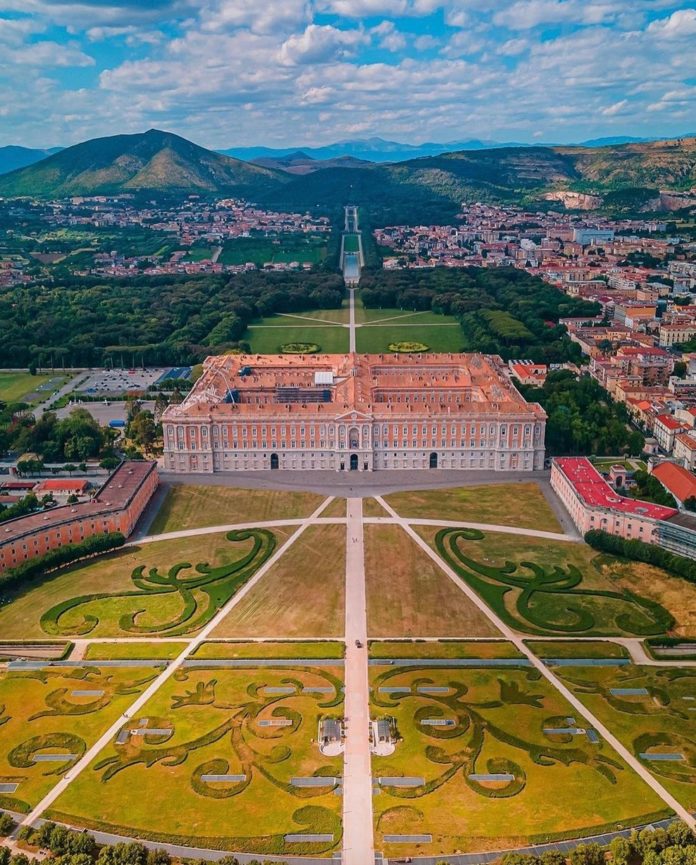
London – The Royal Palace of Caserta represents the largest royal residence in the world by volume. Its complex constitutes one of the Italian state museums granted special autonomy by the Ministry of Cultural Heritage and Activities in 2016.
The only palace capable of rivaling Versailles, the Royal Palace of Caserta, along with the Carolino Aqueduct and the San Leucio complex, has been declared a UNESCO World Heritage Site.
It was the King of Naples Charles of Bourbon who wanted the royal palace in Caserta, in strong competition with the French royal family: in fact, the sovereign wanted to build a palace that could challenge Versailles on the level of magnificence and grandeur.
King Charles of Bourbon, in order to achieve his intent, turned to the architect Luigi Vanvitelli, who arrived in Caserta in 1751 and immediately began the design of the palace. The foundation stone was laid the following year at a solemn ceremony. Considered the last great achievement of Italian Baroque, the Royal Palace of Caserta was finished in 1845.
The royal palace of the Royal Palace of Caserta includes 1,200 rooms and 1,742 windows. The main facade features a central forepart surmounted by a pediment. Two other avant-corps are grafted onto the sides of the elevation, while the southern side is decorated with twelve columns.
The entire palace covers an area of about 47 thousand square meters and has something like 1,026 funnels and 34 staircases. The grand Palatine Chapel is inspired by that of the Palace of Versailles. The Quadreria is a space that holds works belonging to the most diverse artists: in its eight rooms one can find paintings by Michele Scaroina, Salvator Rosa, the collection of portraits of the Bourbon Court and European courts, and the works of the best students of the Naples Academy of Fine Arts.
Contributing to the majesty of the Royal Palace of Caserta, the most imposing of all the palaces in Campania, is the Park, which stretches 3 kilometers long over 120 hectares in area. Very striking are its fountains that, starting from the northern edge of the Italian garden, connect it to the English garden.
Within the park we find: the Margaret Fountain; the Dolphin Pool and Fountain; the Aeolus Pool and Fountain; the Ceres Pool and Fountain; Venus and Adonis Waterfalls and Fountain; and the Diana and Actaeon Fountain, topped by the Great Waterfall.
Director George Lucas chose the Palace of Caserta to shoot some scenes for the films “The Phantom Menace” and “Attack of the Clones,” which are part of the “Star Wars” saga.
When Savoy officials surveyed the contents of the Royal Palace of Caserta in 1861 after the Kingdom of Italy was established, they came across a bidet, which was inventoried with the following words “strange guitar-shaped object.
Source: https://initalia.virgilio.it


